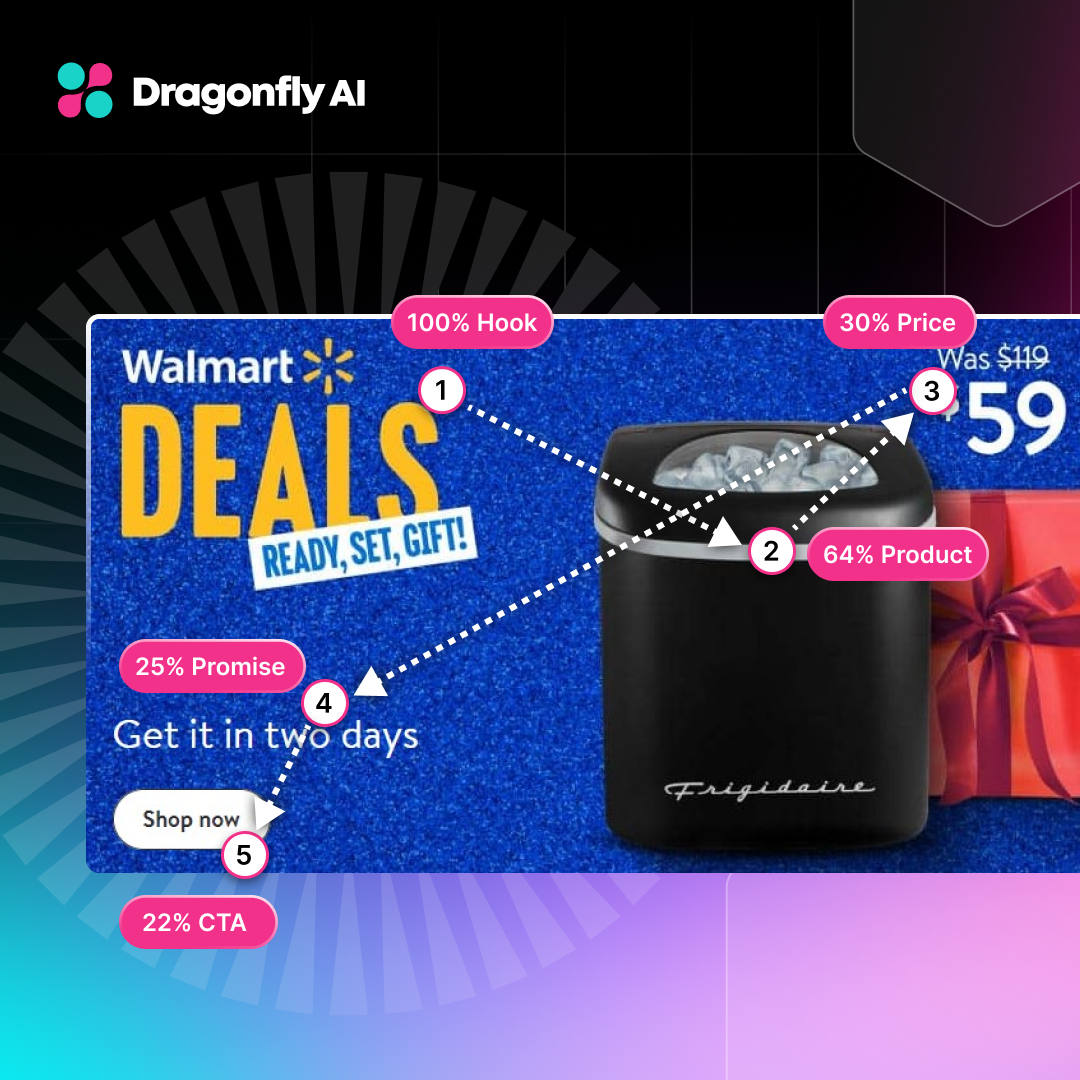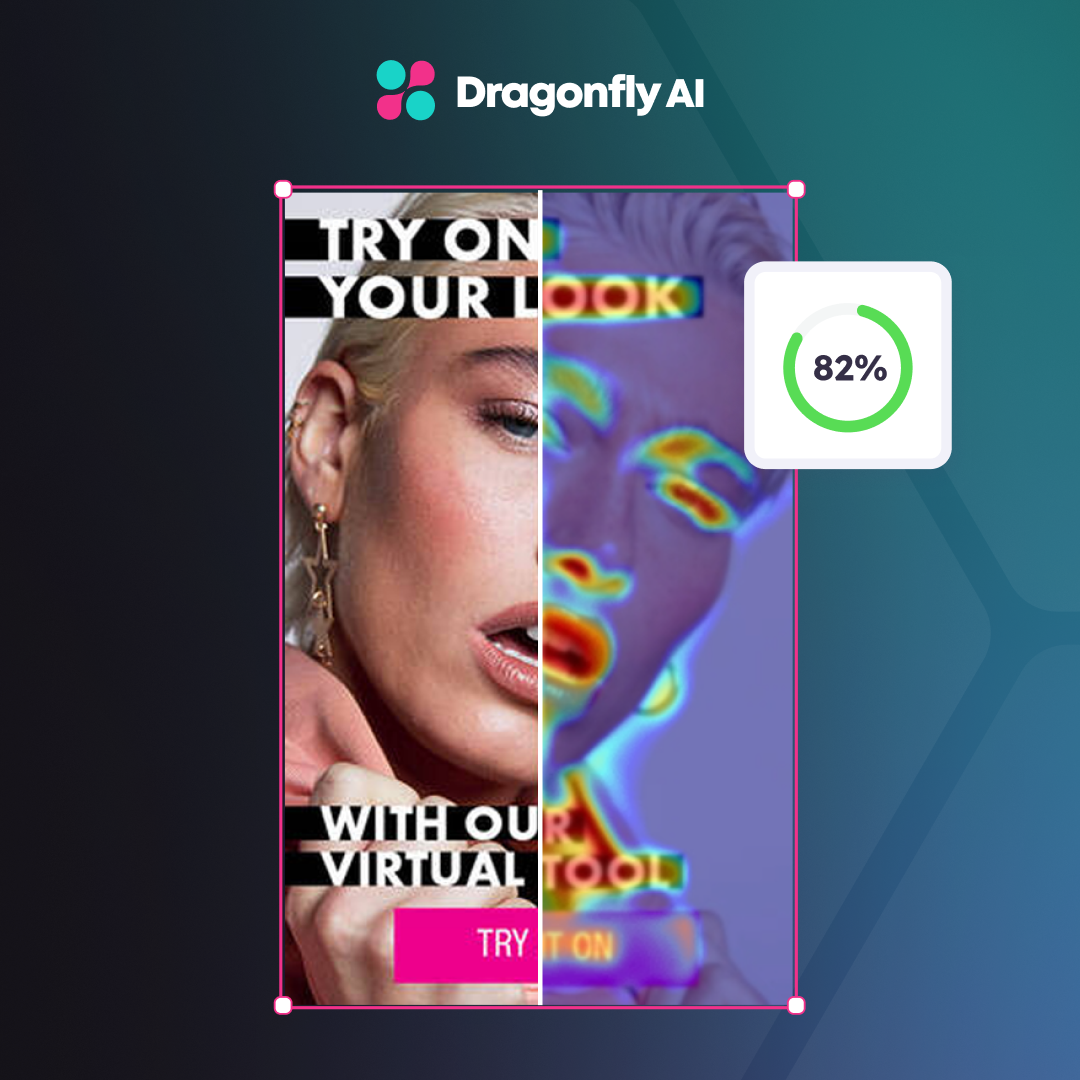Advertisers are turning to AI to squeeze more value from their ad budgets. AI tools now have the capability across pretty much everything from audience targeting to creative testing. But getting real ROI returns requires knowing which AI features actually drive results and which just add complexity to your campaigns.
The challenges of traditional ad spend optimization
Marketing teams know they waste money on ads. The old "rule of 50%" suggests half of all ad spending misses the mark. This waste has only grown worse as advertising channels multiply and competition heats up—81% of retail marketing leaders expect even fiercer competition.
Traditional ad optimization stumbles in four key areas:
Targeting problems
- Broad demographic targeting misses audience nuances, showing ads to the wrong people
- Targeting data becomes out of date quickly, making campaigns irrelevant and hurting your ROI
- Budgets are wasted on people who won’t buy the product or service
Poor ad placement
- Ads show up in the wrong context (think seeing luxury car ads on budget sites, and you get the picture)
- Ads end up on low-traffic or questionable websites
- Low visibility means that many impressions are wasted
- Poor brand alignment damages campaign effectiveness
Ad blocking impact
- Fewer people see the ads, reducing campaign reach. Approximately 42% of internet users worldwide employ some form of ad-blocking technology
- Publishers earn less due to ad blocking, which leads to lower quality ad spaces
- Reduced impressions and clicks hurt ROI
- Available ad inventory shrinks
Tracking issues
- It’s hard to tell which channels drive real results
- Different tracking systems don't talk to each other
- It’s hard to attribute conversions accurately
- Budget is often wasted on underperforming channels
- No clear view of overall campaign performance
Using manual tracking helps fix these problems. With good tracking, marketing teams can spot and fix failing campaigns quickly and put more money into what's working. It’s also easier to target the right audiences and respond to market changes more quickly. Not to mention, you can cut down on the waste and boost ROI numbers.
But manual tracking also takes too much time and often misses important patterns in the data. That's where AI comes in.
How AI transforms ad optimization
The good news is that AI tools have moved beyond basic automation and are now capable of spotting patterns humans miss. They can also predict campaign performance and make real-time adjustments. Marketing teams are using AI more for these capabilities to reduce inefficiencies and boost results across their campaigns.
Here’s how AI is transforming ad spending:
- Analyzing data processes large datasets and uncover patterns and insights.
- Predicting outcomes uses machine learning to forecast ad performance and guide budget allocation.
- Automating tasks handles campaign creation, optimization, and bidding to free up human resources.
- Personalizing targeting delivers tailored ads based on user behavior and preferences.
- Optimizing bids adjusts bids in real-time to maximize visibility and minimize costs.
AI looks at data from many places, including your ad results, who your customers are, what's happening in your market, and what competitors do. Finding patterns in all this information means AI can help you make smarter choices about where to spend your ad budget.
AI use cases in ad spend optimization
Take ad performance history. AI can show you which channels and ad types work best for your audience, so you spend money in the right places. It also spots upcoming trends and predicts how campaigns will do, meaning you can adjust your spending before problems crop up.
How AI works to optimize ad spend
AI tools analyze everything about your ads. That includes past performance, current results, and market patterns. Instead of guessing what might work, you get data-led predictions about which strategies will bring in the most returns for your budget.
Here's what happens behind the scenes:
- AI examines thousands of past campaigns to spot what worked
- It tracks patterns in click rates, conversion times, and costs
- It matches successful ad features with specific audience behaviors
- It watches market changes that affect ad performance
- It uses all this info to predict which new ads will succeed
As a result, you have a better idea and understanding of where to put your money before you spend it and direct the budget towards the most profitable channels.
Programmatic advertising and AI
Gone are the days of manually buying ad space. Today's programmatic tools use AI to buy and place ads instantly, matching your message to the right people at the right moment.
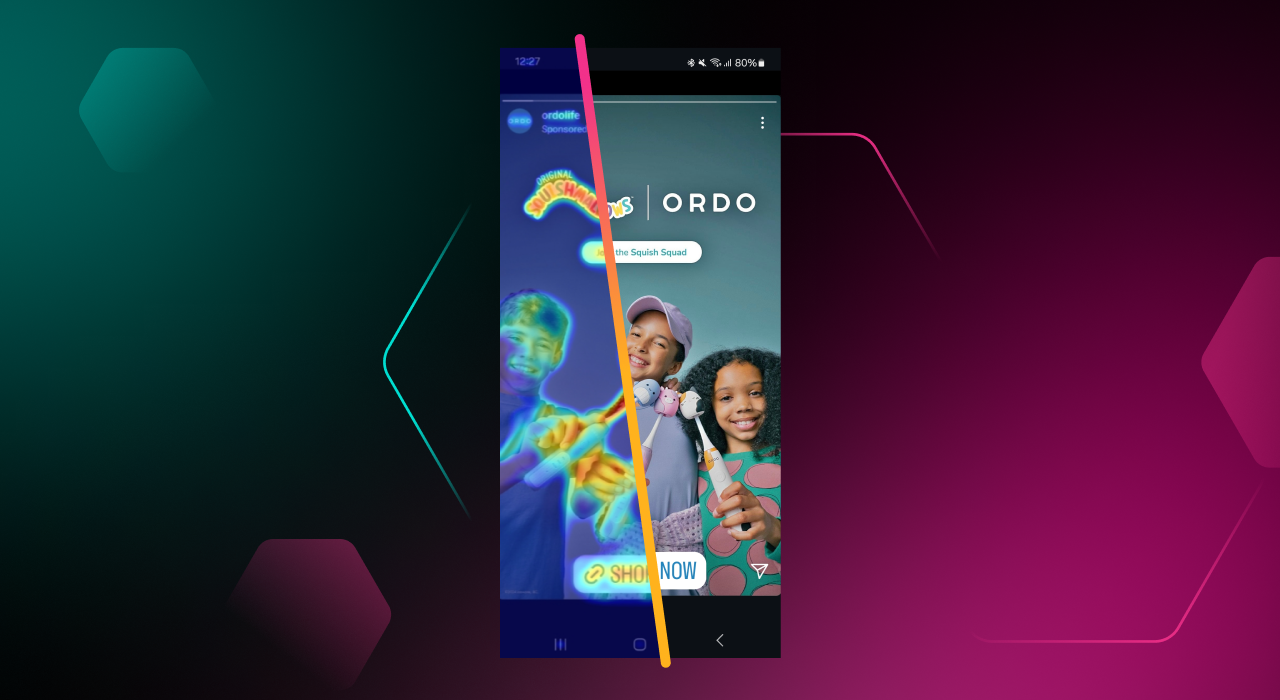
Think of AI as your super-smart ad buyer. It watches where people click, what they buy, and how they browse. Then it spots patterns, like which types of people tend to buy products like yours, or what time of day your ads perform best.
When an ad spot becomes available, AI decides whether this person is likely to be interested, if this is the right time to show them an ad, whether the price is worth it, and if this placement will perform well.
If everything checks out, AI bids on the spot and places your ad. This happens thousands of times a day, each placement optimized for success. The system keeps learning from results, getting smarter with every campaign.
Taking this approach often triumphs over human-managed campaigns because it reacts faster, spots more patterns, and makes decisions based on more data points than any person could track.
Benefits of AI marketing solutions for ad spend optimization
Now we know how AI works in programmatic advertising, let's look at those all-important tools and platforms that make it happen. Each plays a specific role in getting better results from your ad budget.
Real-time bidding
AI evaluates user behavior and demographics, making smart bid decisions at the moment an ad spot becomes available. Such speed and precision means you only pay what each impression is truly worth.
Demand-side platforms
These AI-powered platforms match your ads with the best available spaces across the internet. They analyze thousands of options per second to find spots where your ads will perform best.
Supply-side optimization
AI watches how users interact with different ad placements, learning which spots deliver results. Taking this approach helps avoid wasting money on low-performing positions and focuses on what works.
Data management
By organizing and analyzing user data, AI creates precise audience segments for targeting. Consequently, your ads stand a much better chance of reaching the right people, cutting waste and improving campaign returns.
Best practices for optimizing ad spend with AI
Smart marketers don't just turn on AI and hope for the best. They use AI tools to track everything, be it clicks, engagement, or conversions. They then turn that data into better campaigns.
Here’s what you need to know about optimizing your ad spend with AI
Watch the numbers that matter
Track the metrics that tie directly to your goals. Don't get lost in vanity metrics that don’t move the needle. AI helps recognize which numbers really predict success, so you can focus your attention where it counts.
Cut what's not working, fast
When AI flags an underperforming ad, act quickly. If people aren't clicking, or they're leaving straight away, move that money to better-performing ads. AI spots these patterns faster than humans can.
Test and learn continuously
Let AI run small tests across different ad formats, placements, and messages. When it finds something that works, scale it up. When something fails, learn from it and move on so you don’t waste your time.
Use AI insights to guide strategy
Pay attention to the patterns that AI uncovers. If certain messages or placements consistently perform better, use that information to shape your next campaigns. Use AI's insights to make smarter decisions about your ad spend.
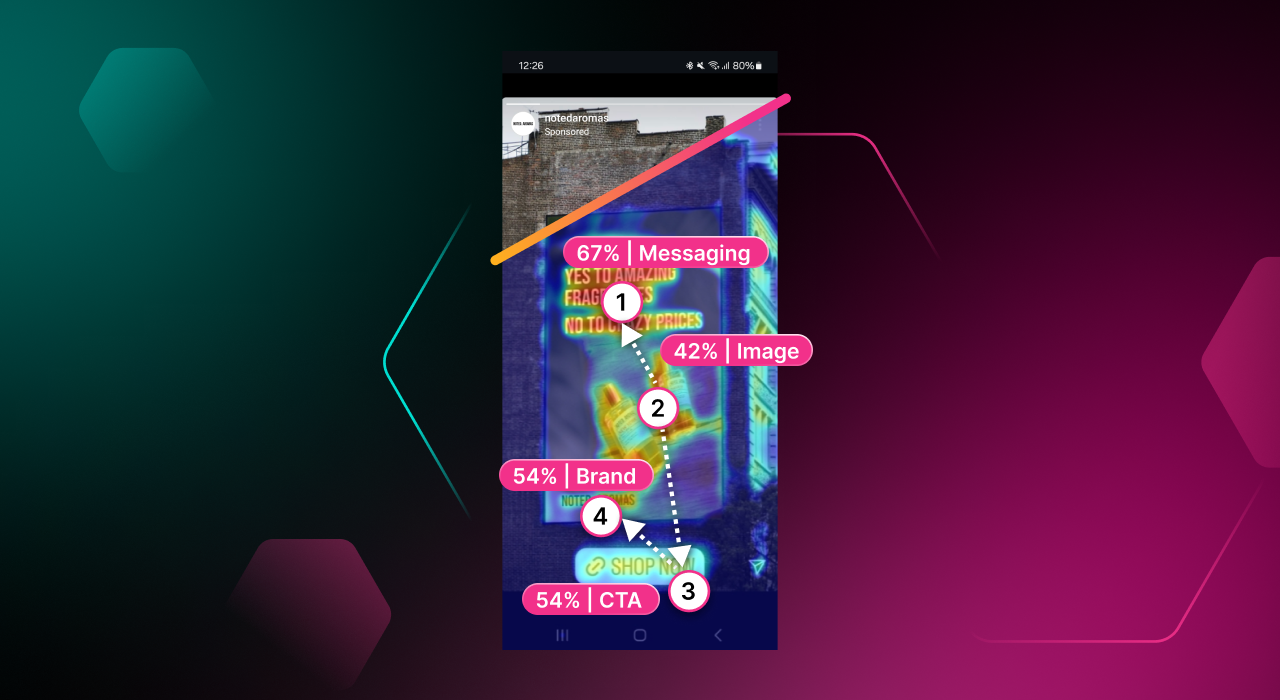
Case studies and real-life examples for AI ad spend inspiration
Let's look at how major brands use AI to get better results from their advertising budgets.
Google leads the AI advertising revolution
Google's AI tools are changing how businesses advertise online. Its system learns from millions of campaigns to help advertisers find and reach the right customers.
Performance Max spreads your ads across Google's entire network, such as Search, Display, YouTube, Discover, and Gmail. It watches how different audiences respond, then adjusts your targeting to find more people like your best customers.
Search ads now go beyond simple keyword matching. AI understands search intent, so when someone types "restaurants near me," it knows to show your local restaurant ad only to people who might actually visit.
Discovery ads use AI to put your visual ads where they'll catch attention—in feeds and on YouTube. The system learns which images and messages work best for different audience segments.
Spotify masters personalized marketing
Spotify shows how AI can turn user data into smart marketing. Its recommendation engine tracks what people listen to, then suggests music they'll probably like. This keeps users engaged and coming back for more.
The "Spotify Wrapped" campaign shows AI marketing at its best. By turning listening data into shareable personal stories, it gets millions of users promoting Spotify on social media—cutting paid advertising costs while growing its user base.
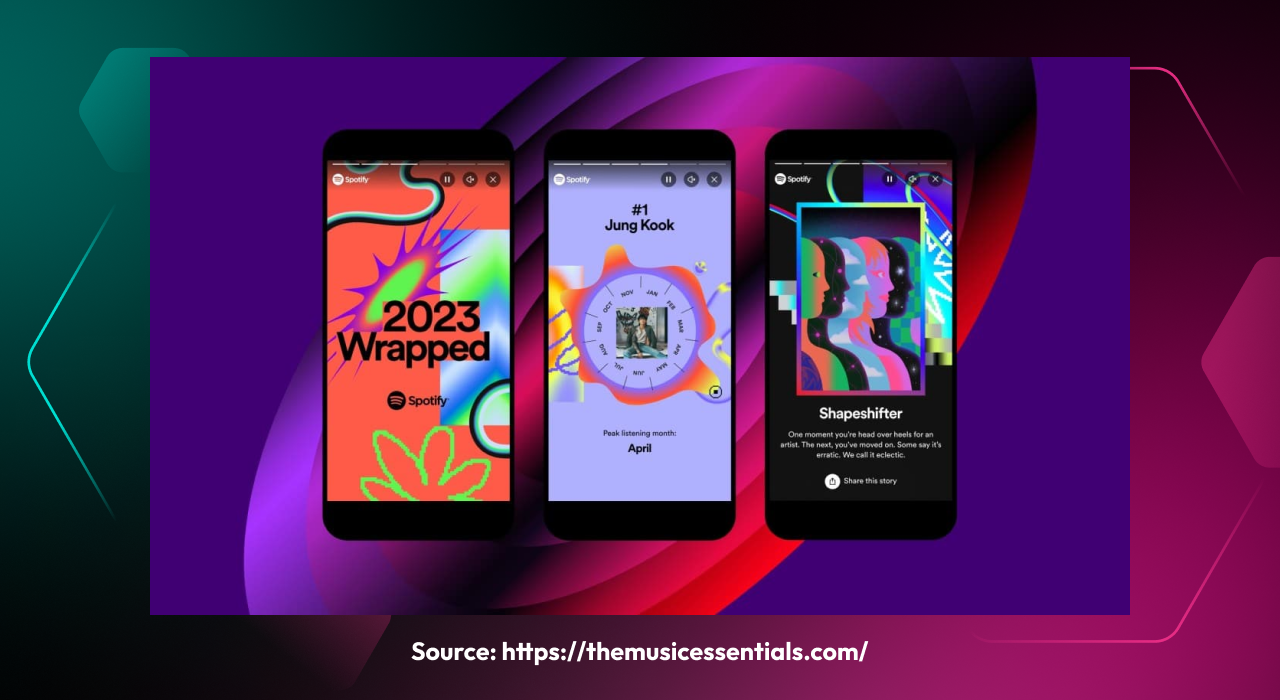
Each December, social media fills with people sharing their Wrapped stats. It's marketing that feels personal, not promotional, proving AI can create campaigns people actually want to engage with.
Coca-Cola takes AI mainstream
Coca-Cola partnered with OpenAI to reinvent its entire advertising approach. It uses AI to:
- Study purchase patterns and online behavior to predict what different customers want
- Target ads based on where people are and what they're doing
- Create and test different ad versions quickly
- Adjust campaigns in real-time based on results
Its success shows that even traditional brands can use AI to make advertising more effective. Coca-Cola kept its core message while using AI to deliver it in more personal, relevant ways.
These examples prove AI is delivering real results for companies willing to use it smartly. The goal is using AI to understand your audience better and create messages that resonate with them personally.
Using AI for your ad spend
AI is changing how companies spend their ad budgets, for the better. From Google's smart targeting to Spotify's personalized campaigns, the results are clear that AI helps deliver better returns when used strategically. And your brand can do the same, focusing on features that drive real results and using AI's insights to make smarter spending decisions.
See how Dragonfly AI can help optimize your creative assets with data-driven insights to drive conversions and sales.
